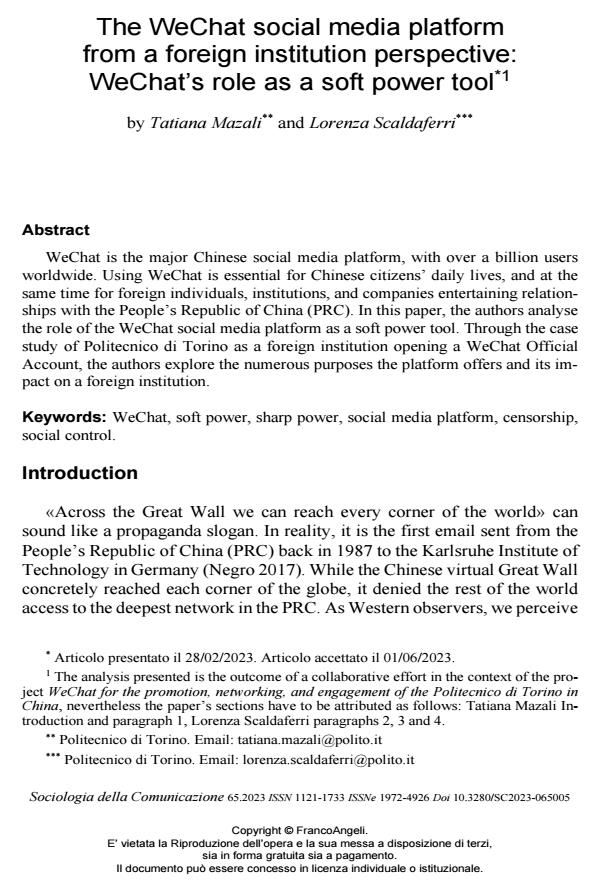The WeChat social media platform from a foreign institution perspective: WeChat’s role as a soft power tool
Journal title SOCIOLOGIA DELLA COMUNICAZIONE
Author/s Tatiana Mazali, Lorenza Scaldaferri
Publishing Year 2023 Issue 2023/65
Language English Pages 21 P. 69-89 File size 459 KB
DOI 10.3280/SC2023-065005
DOI is like a bar code for intellectual property: to have more infomation
click here
Below, you can see the article first page
If you want to buy this article in PDF format, you can do it, following the instructions to buy download credits

FrancoAngeli is member of Publishers International Linking Association, Inc (PILA), a not-for-profit association which run the CrossRef service enabling links to and from online scholarly content.
WeChat is the major Chinese social media platform, with over a billion users worldwide. Using WeChat is essential for Chinese citizens’ daily lives, and at the same time for foreign individuals, institutions, and companies entertaining rela-tionships with the People’s Republic of China (PRC). In this paper, the authors an-alyse the role of the WeChat social media platform as a soft power tool. Through the case study of Politecnico di Torino as a foreign institution opening a WeChat Official Account, the authors explore the numerous purposes the platform offers and its impact on a foreign institution.
Keywords: WeChat, soft power, sharp power, social media platform, censorship, social control.
- WeChat Social Media Platform Marzia Brandolese, Lorenza Scaldaferri, in SOCIAL REVIEW. International Social Sciences Review / Revista Internacional de Ciencias Sociales /2025 pp.85
DOI: 10.62701/revsocial.v13.5450
Tatiana Mazali, Lorenza Scaldaferri, The WeChat social media platform from a foreign institution perspective: WeChat’s role as a soft power tool in "SOCIOLOGIA DELLA COMUNICAZIONE " 65/2023, pp 69-89, DOI: 10.3280/SC2023-065005